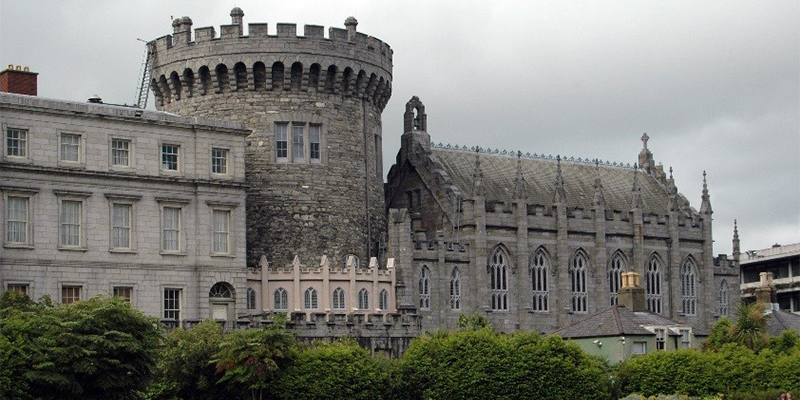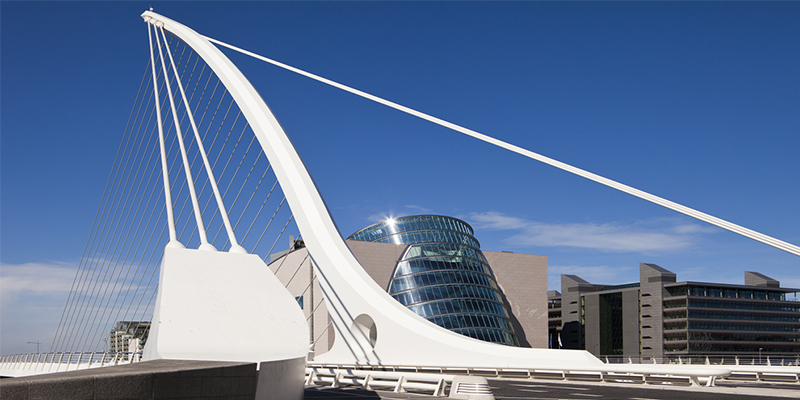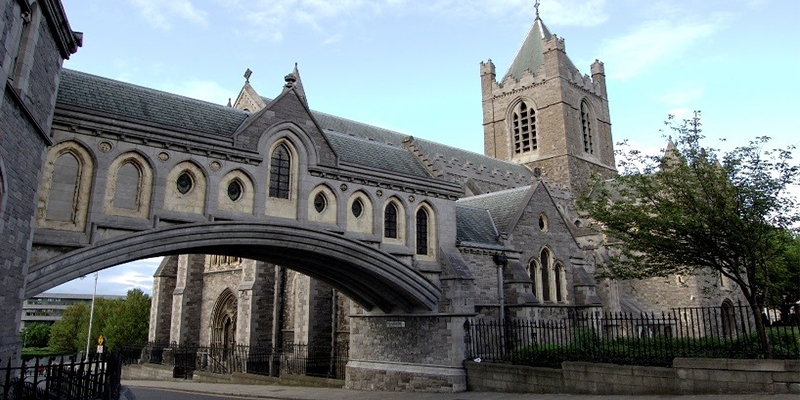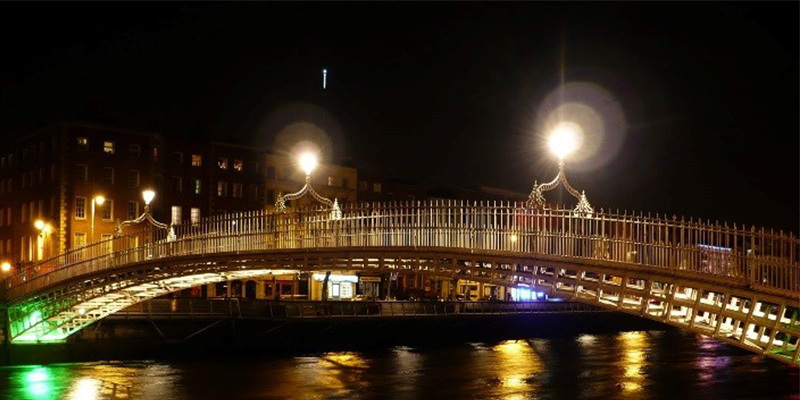Surrounded by lush green landscapes, Dublin is overflowing with charming residents, magnificent architecture, and, of course, a rich cultural heritage. Amongst the great tourist spots of this capital city are some grand designs of architects gone by, making the skyline of Dublin truly unique and steeped in history. From castles to bridges and towers to churches, an array of eye-catching stone and glass awaits your discovery. Peruse below our hand-picked collection of Dublin’s stunning architectural gems.
 Dublin Castle by Maureen/CCBY
Dublin Castle by Maureen/CCBY
The historic, 13th century structure of Dublin Castle was founded by King John in 1204. It houses the Chapel Royal,
decorated with almost a hundred carved heads of past Irish personages and saints, made from Tullamore limestone. The chapel’s Gothic revival interior give a sense of its rich history, with towering pillars and arches, and beautifully carved wooden balconies.
The castle is located right in the heart of Dublin, and its vast and beautiful gardens are open for exploration. Keep an eye out for the statue figure of Justice in the Upper Yard, holding a set of scales – it faces away from the city, and is said to be symbolic of justice during British rule. Just next to the statue is the Belford Clock Tower, the mighty centrepiece of the Georgian-style courtyard. The buried remains of the old castle give a rare glimpse into its original stature, with Viking-built foundations made from ox blood, horse hair and egg shells.

Designed by architect Santiago Calatrava and measuring almost 124 metres long, the Samuel Beckett Bridge reflects a balance between tradition and modernity. It officially opened in 2009 to reduce congestion in Dublin’s city centre, connecting the north and south sides of the River Liffey, and is equipped with a rotational mechanism that turns ninety degrees, allowing ships to pass underneath.
With steel cables acting as strings to the snow white structure, the bridge resembles a prominent symbol of Ireland – the harp. It’s grand and inviting look was designed by Calatrava to reflect the warmth of the citizens of Dublin, whom he grew an affinity for after building the James Joyce Bridge previously. Constructed from reinforced concrete, steel, asphalt and granite, the bridge looks magnificent from a distance, and walking along it affords a fantastic view of the city.
 Iglesia Cristiana en Dublin by Macnolete/Creative Commons
Iglesia Cristiana en Dublin by Macnolete/Creative CommonsOriginally set up by Viking settlers around 1038, the Christ Church Cathedral has been restored a number of times with the last renovation giving its Victorian Neo-Gothic appearance. The interior of the cathedral is almost completely Victorian in nature, its intricately carved pillars, columns and pulpits marking the restoration period of the 19th century.
The medieval structure of the cathedral is still evident through the refaced stone exterior with the most remarkable feature being the Romanesque door on the southern transept gable - its magnificent stone arch dates back to the 12th century. The Chapel of St. Laurence O’Toole is another survivor of the refurbishment, sitting on the south transept’s east side and displaying a heart shaped iron reliquary between two black and white stone pillars. You can also find the distinctively designed encased bridge built in the 1870s that connects the cathedral to the Synod Hall, where there is an exhibition dedicated to medieval Dublin.
 Dublin by Borshop/Creative Commons
Dublin by Borshop/Creative CommonsThe Ha’penny Bridge opened on the River Liffey in 1816. Made of iron cast in Shropshire, the elliptical arch was originally called the Wellington Bridge, after the Duke of Wellington. Located in the very heart of Dublin, the bridge was closed for renovation in 2001, when Dubliners’ daily usage went over twenty-seven thousand people.
Almost all of the original material was used for the restoration, which left the bridge painted its original off-white across its forty-three meter span. Shining magnificently off the surface of the river from just over three metres above, the bridge’s entrances were also adjusted to allow more standing room for pedestrians on either side.
You can explore the city by foot and see all there is to see from one of our three Leonardo Hotels Dublin.
Main image: Samuel Beckett Bridge, Dublin, Ireland by Chmee2/ Creative Commons